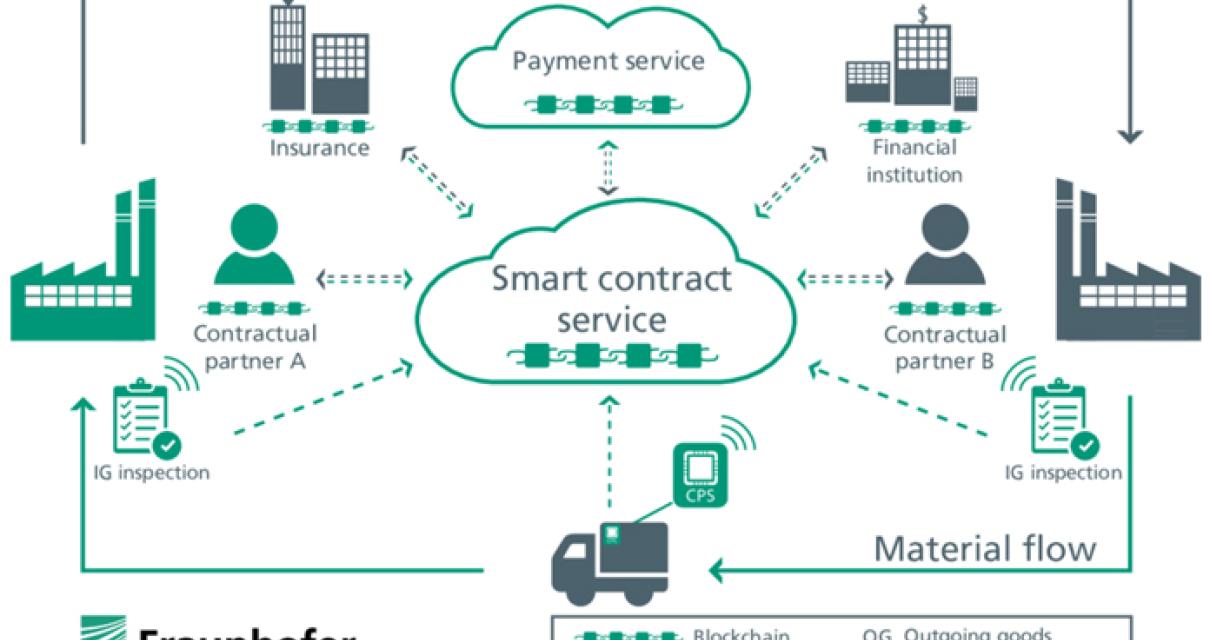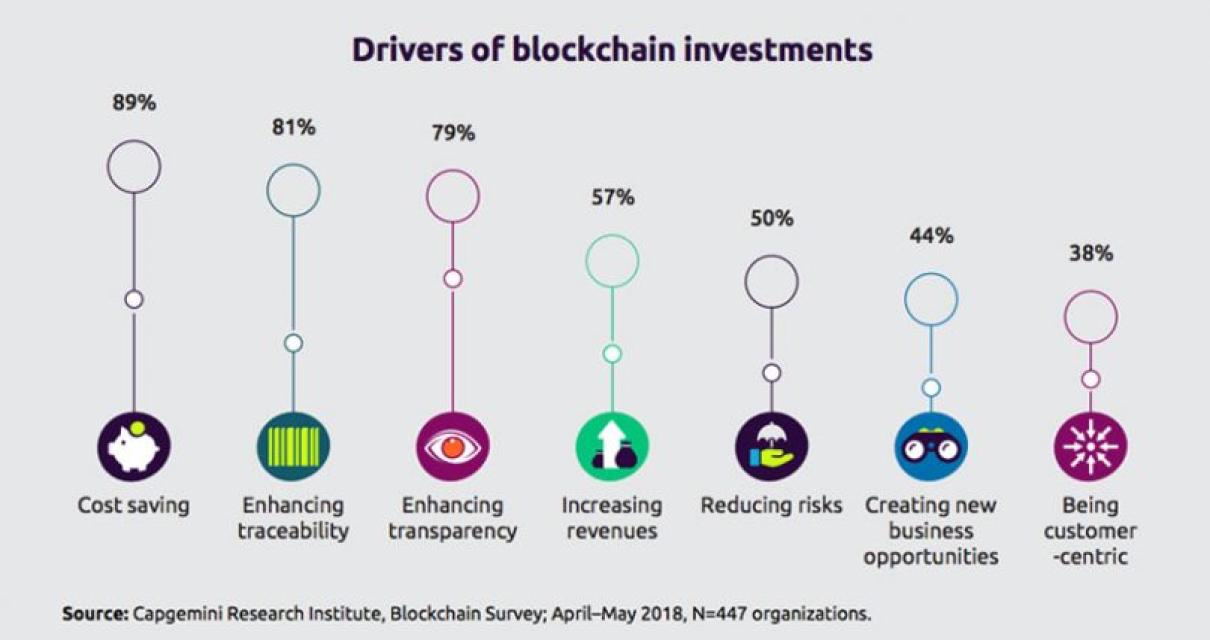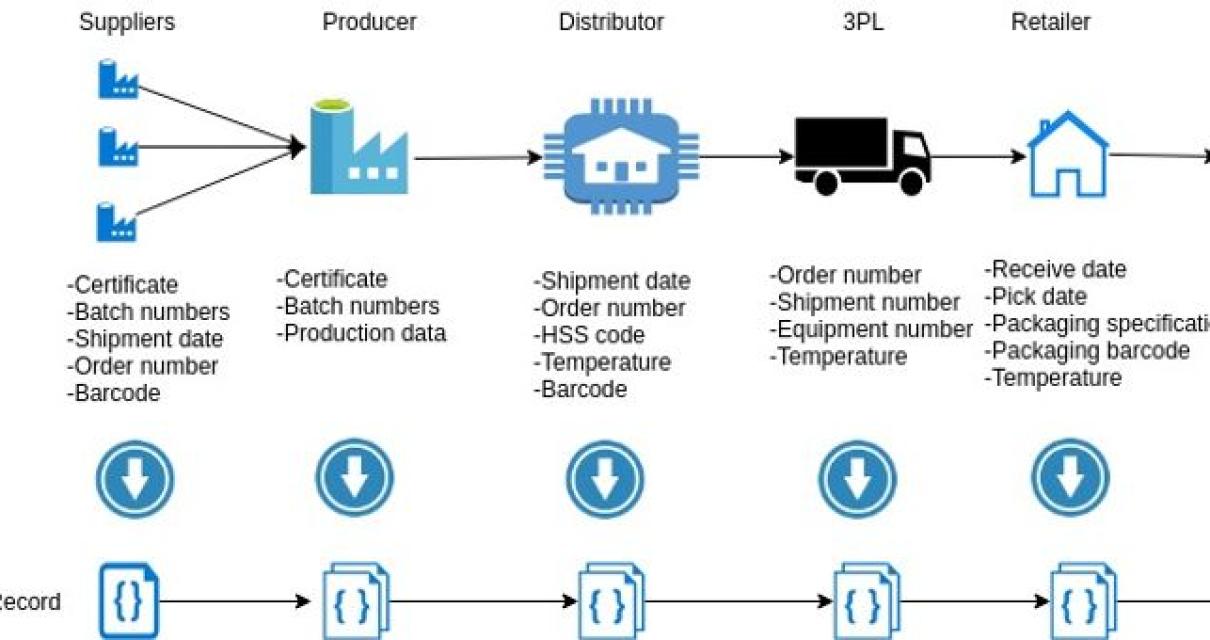What is a blockchain supply chain?
A blockchain supply chain is a system that records the movement of goods from the producer to the consumer. It uses a distributed ledger to create a tamper-proof record of the entire supply chain. This system can help to track down counterfeit goods, ensure safety and quality of products, and improve transparency in the supply chain.
How can blockchain improve supply chains?
Blockchain could improve supply chains by providing a secure, tamper-proof record of transactions. This could help prevent fraud and ensure that products are delivered on time. Additionally, blockchain could help improve communication between different parts of the supply chain.
The benefits of blockchain for supply chain management
There are many benefits of blockchain for supply chain management. One benefit is that it can help to improve security. Because all the information is stored on a blockchain, it is difficult for someone to tamper with the data. This is particularly important in the food supply chain, where tampering with food could lead to health risks for consumers.
Another benefit of blockchain for supply chain management is that it can help to speed up the process. Because all the information is stored on a blockchain, it can be quickly accessed by everyone involved in the supply chain. This makes it easier to track where products are and how they are being processed.
Finally, blockchain can help to reduce costs. Because everything is tracked on a blockchain, it is possible to identify and eliminate wastefulness in the supply chain. This can save businesses money in the long run.
How blockchain is transforming supply chains
Blockchain is a distributed database that allows for secure, tamper-proof transactions. It can be used to track items throughout the supply chain, from manufacturer to consumer. This could help prevent fraud and ensure that products are delivered on time and in the correct condition.

How to use blockchain in your supply chain
There are a few ways to use blockchain in your supply chain. One way is to use it to track the origin of materials. Another way is to use it to manage and track payments.
Building a blockchain-based supply chain
management platform
A blockchain-based supply chain management platform could help businesses automate and track the flow of goods throughout the supply chain. This platform could help businesses monitor and manage inventory, track shipping logs, and track the origin and destination of products. This platform could also help businesses create and manage contracts with suppliers, and track payments made to suppliers.
The future of blockchain and supply chains
As blockchain technology continues to grow, it is likely that more and more companies will adopt it in order to improve their supply chains. This could lead to a number of benefits for both companies and consumers, including:
Reduced costs: Blockchain could help to reduce costs by eliminating the need for third-party intermediaries.
Elimination of fraud: Blockchain could help to eliminate fraud by recording information about the product’s journey from supplier to consumer in an immutable way.
Improved transparency: Blockchain could help to improve transparency by allowing consumers to track the whereabouts of products throughout the supply chain.
Increased trust: Blockchain could help to increase trust by creating a more secure and transparent system.

Why blockchain is the key to Supply Chain 4.0
.5
There are a few key things that make blockchain the perfect technology for supply chain applications. First, blockchain is a distributed database system that allows for secure, transparent and tamper-proof tracking of goods throughout the supply chain. Second, blockchain's immutable ledger makes it easy to track goods from origin to sale, and eliminates the need for intermediaries such as banks and shipping companies. Finally, blockchain's ability to create trust between parties via smart contracts makes it an ideal tool for managing and tracking complex supply chains.
How to build a blockchain supply chain
There is no one definitive way to build a blockchain supply chain. Many different companies and organizations are currently experimenting with various models and approaches.
Some of the most common methods for building a blockchain supply chain include using a distributed ledger system (DLT), creating a trust management platform, and using smart contracts.
DLT
A DLT is a digital ledger that can be used to track the history of items and transactions. This can help to ensure that products are being delivered as promised and that there is accountability for all involved in the supply chain.
Trust management platform
A trust management platform helps to create and manage trust relationships between different companies and individuals in a supply chain. This can help to ensure that all parties are aware of and compliant with the terms of the contract.
Smart contracts
Smart contracts are computer programs that automatically execute the terms of a contract when specific conditions are met. This can help to reduce the need for third-party verification and validation, making the process more efficient and streamlined.
Best practices for using blockchain in the supply chain
There is no one-size-fits-all answer to this question, as the best approach for using blockchain in the supply chain will vary depending on the specific needs of the organization. However, some general tips to consider when implementing blockchain in the supply chain include:
1. Considering the benefits of blockchain
Before deciding whether or not to use blockchain in the supply chain, it is important to understand the potential benefits of doing so. These benefits can include:
Reduced costs and time delays: Blockchain can help reduce costs and time delays associated with transactions, which can lead to increased efficiency and profitability for businesses.
Reduced risk: Blockchain can help reduce the risk of fraud and tampered products by providing a secure and transparent system for tracking products from inception to delivery.
Enhanced customer trust: Blockchain can help build customer trust by providing a permanent record of product data that is accessible by all parties involved in the supply chain.
2. Creating a blockchain platform
Before using blockchain in the supply chain, it is important to create a platform that is tailored specifically for this purpose. This platform should include features such as:
A database: The platform should include a database that is designed specifically for storing product data. This database should be secure and easy to access by all parties involved in the supply chain.
A user interface: The platform should include a user interface that is easy to use, allowing members of the supply chain to track products and transactions easily.
3. Implementing blockchain in the supply chain
Once the platform has been created, it is time to implement blockchain in the supply chain. To do so, members of the supply chain will need to:
Install a blockchain platform: In order to use blockchain in the supply chain, members of the supply chain will need to install a blockchain platform.
Update product data: Once the blockchain platform has been installed, members of the supply chain will need to update product data into the database. This data should include information such as product description, manufacturing details, and shipping information.
4. Tracking transactions and products
Once product data has been entered into the blockchain platform, it is time to track transactions and products. To do this, members of the supply chain will need to:
Create a transaction ledger: In order to track transactions and products, members of the supply chain will need to create a transaction ledger. This ledger will track all transactions and products that have taken place in the supply chain.
Update product data: As product data is updated into the blockchain platform, it will need to be tracked in the transaction ledger. This tracking process will ensure that all data is accurate and up-to-date.
5. Reviewing transactions and products
Once transactions and products have been tracked, it is time to review them. This review process will help ensure that all data is accurate and consistent across the entire supply chain.

Implementing blockchain in your supply chain
There is no one-size-fits-all answer to this question, as the best way to implement blockchain in your supply chain will vary depending on the specific industry and company structure. However, some tips on how to do this include:
1. Establish a clear business strategy for blockchain. Before you even begin thinking about implementing blockchain in your supply chain, you need to make sure that it is actually something that is worth your time and investment. Do your research to know what other companies are doing with the technology, and then develop a strategy based on that information.
2. Build a consortium of like-minded companies. One of the biggest benefits of blockchain technology is that it can help to create a more transparent and secure supply chain. To achieve this goal, you will likely need to work with other companies in your industry to develop a consortium-style approach. This will allow you to share information and collaborate on projects together, which will ultimately lead to improved supply chain security and efficiency.
3. Use blockchain to track goods throughout the supply chain. One of the key advantages of blockchain technology is that it can help to track goods throughout the supply chain in a secure and tamper-proof manner. By using blockchain, you can ensure that all information related to the goods being shipped is accurate and up-to-date, which will help to ensure quality control and compliance with regulatory requirements.
4. Implement smart contracts to automate transactions. Another key advantage of blockchain technology is that it can be used to automate transactions between different parties in your supply chain. This can help to improve efficiency and reduce the time and costs associated with manual processes.
5. Use blockchain technology to create a digital ledger of transactions. One of the most important aspects of any blockchain implementation is the creation of a digital ledger of transactions. This ledger can be used to track all aspects of your supply chain, from shipments to payments, and can provide a secure and transparent record of all transactions.